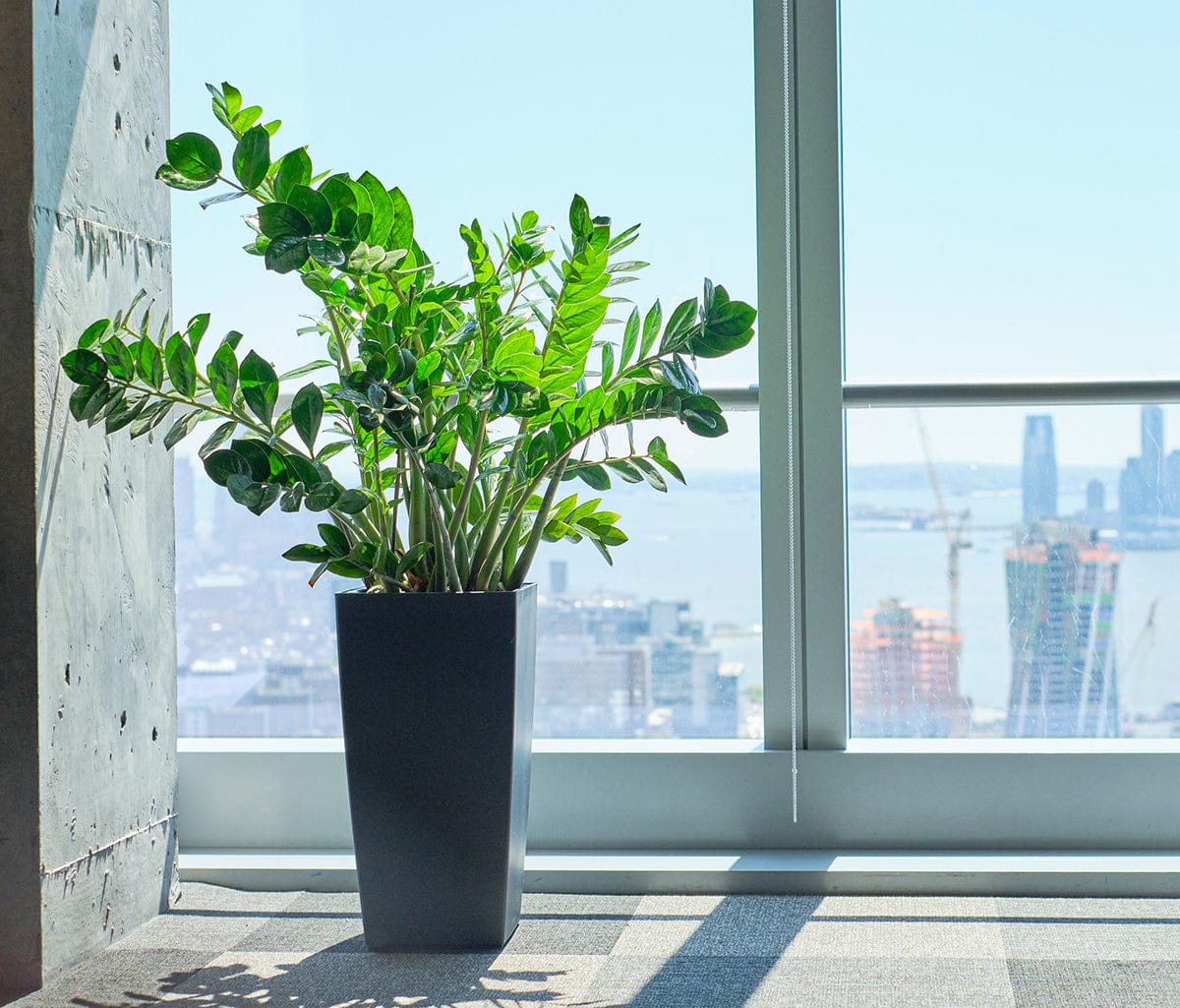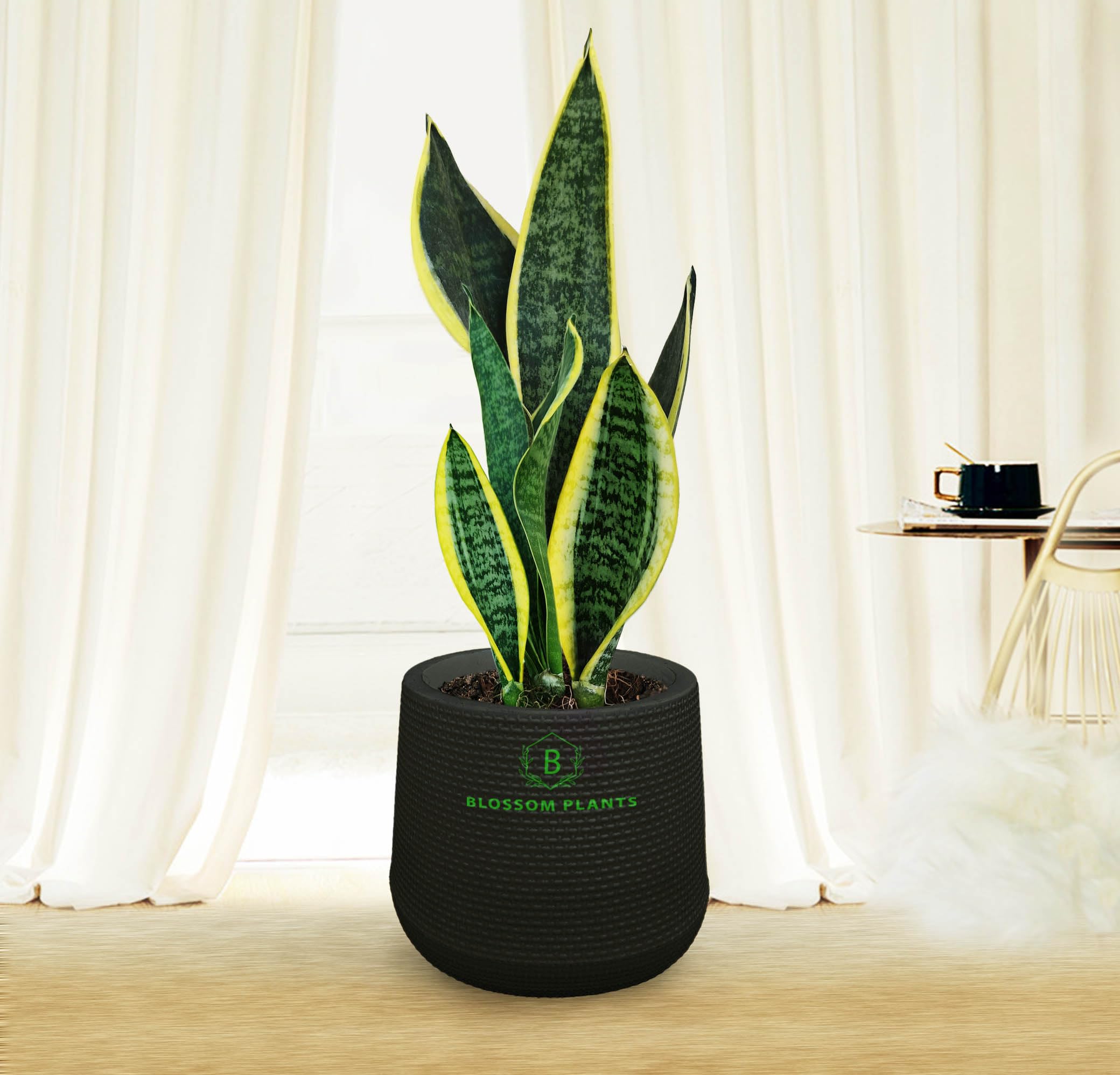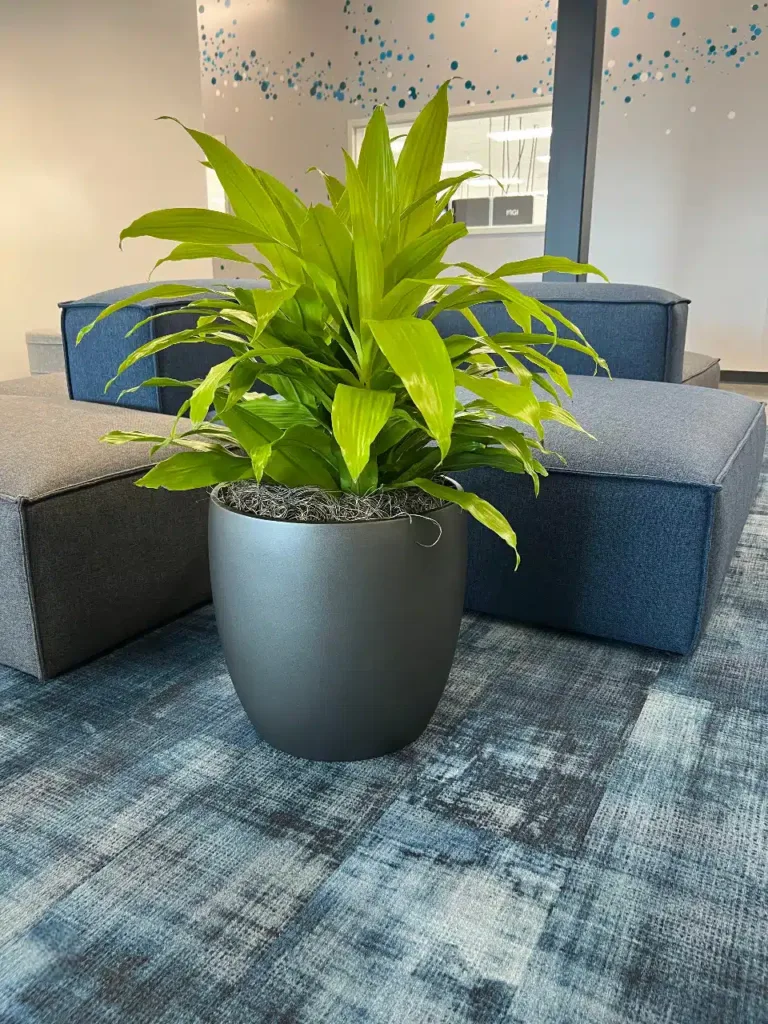News
Top 7 Office Plants That Purify Air and Reduce Stress for Employees
Introduction
In today’s fast-paced business world, workplaces are not just places to complete tasks—they are environments where employees spend a large part of their day. Improving air quality and reducing stress at work have become top priorities for companies aiming to boost productivity and employee satisfaction. Top 7 office plants that purify air and reduce stress for employees is a topic worth exploring because the right greenery can transform any office into a healthier, calmer, and more inspiring space.
Indoor plants are more than decorative touches. Scientific studies show that certain plant species naturally filter toxins from the air while also improving humidity levels. At the same time, greenery has a measurable impact on mood, creativity, and focus. This article introduces seven of the best office plants for cleaner air and calmer minds, with tips on choosing and caring for them to maximize benefits.
Why Office Plants Matter
Health and Air Quality Benefits
Indoor environments often accumulate pollutants such as formaldehyde, benzene, and carbon dioxide from furniture, paints, and electronics. Plants absorb some of these substances and release oxygen, which refreshes the atmosphere. When strategically placed, plants also improve humidity levels, making breathing easier and reducing the risk of headaches or dry skin.
Stress Reduction and Mental Well-Being
Visual contact with nature—even in the form of potted plants—reduces cortisol levels, lowers blood pressure, and promotes relaxation. A workplace filled with greenery feels more welcoming, which can improve employee morale and reduce absenteeism.
Aesthetic and Productivity Gains
Plants soften the sterile look of modern offices, creating a more vibrant and attractive environment. Studies show that employees working in plant-rich spaces report higher job satisfaction, better concentration, and improved creativity.
Choosing the Right Plants for the Office

Key Criteria
When selecting plants, consider light conditions, maintenance level, and space. Not all plants thrive in low light or tolerate irregular watering. Look for species known for their resilience, air-purifying abilities, and compact growth.
Placement Tips
Place plants near windows for natural light but away from direct heat sources like radiators. For large open offices, group plants in clusters to create visual interest and improve airflow. In small offices, choose vertical planters or shelves to maximize space.
Seven Office Plants That Purify Air and Reduce Stress
Peace Lily (Spathiphyllum)
Air-Purifying Qualities
Peace Lilies are renowned for their ability to absorb harmful toxins such as ammonia, benzene, and formaldehyde. They also increase humidity, which helps ease dry eyes and respiratory issues common in office settings.
Stress-Relief Benefits
With their glossy green leaves and elegant white blooms, Peace Lilies bring a sense of calm and refinement to the workplace. Their soft appearance can help reduce visual fatigue during long working hours.
Care Tips
Peace Lilies prefer indirect light and moderate watering. Allow the soil to dry slightly between waterings to prevent root rot. They also thrive in average office temperatures.
Snake Plant (Sansevieria)

Air-Purifying Qualities
Also called “Mother-in-Law’s Tongue,” the Snake Plant is a hardy species that removes toxins like trichloroethylene and formaldehyde from the air. It’s one of the few plants that continue producing oxygen at night, which makes it especially beneficial for offices with poor ventilation.
Stress-Relief Benefits
The upright, sword-shaped leaves of the Snake Plant create a modern, architectural look. This clean aesthetic can promote a sense of order and stability in busy office environments.
Care Tips
Snake Plants tolerate low light and infrequent watering—perfect for workplaces where plant care might be inconsistent. Simply water every two to three weeks and avoid overwatering.
Areca Palm (Dypsis lutescens)
Air-Purifying Qualities
The Areca Palm is an excellent natural humidifier, releasing moisture into the air and filtering pollutants simultaneously. It can significantly improve indoor air quality in larger office spaces.
Stress-Relief Benefits
With its feathery fronds and tropical feel, the Areca Palm brings a vacation-like atmosphere into the office, helping employees feel relaxed and energized.
Care Tips
Place the palm in bright, indirect light and water regularly but lightly. It appreciates consistent humidity but adapts well to normal office conditions.
ZZ Plant (Zamioculcas zamiifolia)
Air-Purifying Qualities
The ZZ Plant is famous for its ability to thrive in low light and withstand neglect. It filters xylene, toluene, and other indoor pollutants, making it an easy yet effective choice for air purification.
Stress-Relief Benefits
The thick, waxy leaves of the ZZ Plant reflect light and add a glossy, polished look to office décor. Its low-maintenance nature also reduces the “plant care stress” often felt by busy employees.
Care Tips
Water sparingly, allowing the soil to dry out completely between waterings. This plant does well in shaded corners, so it’s ideal for cubicles or hallways without windows.
Boston Fern (Nephrolepis exaltata)
Air-Purifying Qualities
Boston Ferns excel at removing indoor air pollutants like formaldehyde and improving humidity. Their dense foliage creates a natural air filter, making the surrounding space feel fresher.
Stress-Relief Benefits
The lush, cascading fronds of Boston Ferns add a soft, natural texture to office interiors. Their presence can help employees feel more connected to nature, reducing tension and mental fatigue.
Care Tips
Keep the soil consistently moist and place the fern in indirect light. Regular misting helps maintain humidity, especially in air-conditioned offices.
Rubber Plant (Ficus elastica)
Air-Purifying Qualities
Rubber Plants are powerful toxin absorbers, tackling formaldehyde and carbon monoxide effectively. They also produce large amounts of oxygen, improving overall air quality.
Stress-Relief Benefits
With their broad, glossy leaves and bold appearance, Rubber Plants make a statement. Their rich green color creates a grounding effect, which can enhance concentration and calm.
Care Tips
Rubber Plants like bright, indirect light and moderate watering. Wipe leaves occasionally to remove dust and maintain their shine.
Pothos (Epipremnum aureum)
Air-Purifying Qualities
Pothos, sometimes called “Devil’s Ivy,” is one of the easiest indoor plants to grow. It removes indoor air toxins efficiently and adapts to a wide range of conditions.
Stress-Relief Benefits
The trailing vines of Pothos soften harsh office lines and bring a touch of nature to shelves or partitions. Its fast growth and low maintenance make it a morale-boosting plant for busy workplaces.
Care Tips
Water when the soil feels dry and provide indirect light. Pothos can also be grown in water alone, making it versatile for creative office displays.
How to Maximize the Benefits of Office Plants
Create a Green Office Strategy
Introduce plants gradually and mix species for variety. Combine tall plants like Areca Palm with tabletop options like Peace Lilies or Snake Plants. Use planters that complement your office décor to create a cohesive look.
Encourage Employee Involvement
Let employees choose or care for certain plants. This shared responsibility can build community and increase the sense of ownership over the workspace.
Maintain Regular Care
Healthy plants deliver the best results. Set up a simple watering and pruning schedule, or hire a plant maintenance service if needed. Consistent care ensures plants remain vibrant and effective.
Additional Tips for a Healthier, Calmer Workplace
Optimize Lighting and Ventilation
Natural light enhances plant growth and employee well-being. Open blinds where possible and ensure proper ventilation to circulate fresh air.
Incorporate Other Stress-Reducing Elements
Pair plants with comfortable seating, ergonomic furniture, and calming colors. Together, these elements create a holistic environment that supports productivity and health.
Measure Impact Over Time
Track employee feedback and productivity metrics to see how plants influence workplace satisfaction. Use this data to refine your office design strategy.
Beyond the Seven Plants: Building a Holistic Green Workplace
Understanding “Biophilic Design” in Offices
Biophilic design is an architectural and interior design philosophy that integrates elements of nature into human environments. While a few potted plants are a start, true biophilic design goes further: natural light, organic shapes, water features, and even natural soundscapes. Offices adopting this approach see measurable gains in employee retention and creativity. Incorporating greenery strategically—on living walls, suspended planters, or green dividers—enhances visual contact with nature throughout the workday.
Psychological Mechanisms Behind Green Spaces
Exposure to greenery triggers the parasympathetic nervous system, which promotes relaxation and reduces stress hormones. Even micro-breaks—like glancing at a living wall during a meeting—can reset attention spans. Research from environmental psychology shows that visual complexity in natural patterns (such as leaves and fronds) calms the mind more effectively than uniform surfaces.
Innovative Plant Displays for Offices
Living Walls and Vertical Gardens
Rather than simply adding more pots, companies are experimenting with vertical gardens. These living walls act as both air filters and acoustic panels, reducing background noise in open offices. They also free up floor space while making a strong visual statement for clients and visitors.
Desk-Sized Terrariums and Micro-Gardens
Compact terrariums filled with moss, succulents, or miniature ferns offer a low-maintenance way for employees to personalize their workspace. These micro-gardens work well in areas with limited light and bring a sense of ownership and creativity to individual desks.
Plant Partitions for Privacy
Tall planters arranged in rows can act as natural room dividers, offering privacy without the sterile look of cubicle walls. Combined with aromatic species such as herbs or mild-scented flowering plants, these partitions can subtly enhance the olfactory environment too.
Integrating Plants Into Corporate Culture
Green Committees and Employee Engagement
Many organizations create “green teams” where volunteers manage plant care schedules or suggest new plant installations. This participation strengthens teamwork and helps distribute maintenance responsibilities. It also gives staff a sense of pride in shaping their work environment.
Wellness Programs Linked to Green Spaces
Forward-thinking companies pair their wellness programs with indoor greenery. For example, they might host lunchtime plant-care workshops, mindfulness sessions near living walls, or seasonal “office garden days” to refresh arrangements. This integration turns plants from mere décor into active wellness tools.
Branding and Sustainability Storytelling
An office filled with healthy plants signals eco-conscious values to clients and recruits. Companies can showcase their green offices on social media, weaving sustainability into brand storytelling. This authentic visual content supports marketing efforts while reinforcing internal culture.
Maintenance Strategies for Large-Scale Greenery
Professional Plant Services
For offices with dozens or hundreds of plants, outsourcing maintenance to horticulture specialists ensures consistent care. These professionals monitor soil moisture, rotate plants for even light exposure, and replace underperforming specimens promptly.
Smart Irrigation and Sensor Technology
New “smart pot” systems use moisture sensors to alert staff when watering is needed. Some even automate irrigation entirely, reducing guesswork and plant loss. These technologies fit seamlessly into tech-driven workplaces where data and efficiency matter.
Low-Impact Pest Management
Indoor plants occasionally attract pests like fungus gnats or spider mites. Non-toxic treatments such as neem oil sprays or biological controls (beneficial insects) maintain plant health without introducing harmful chemicals into the office air.
Choosing Plants for Specific Office Conditions
Low-Light Corners
Beyond the classic low-light species, offices can try hardy moss displays, air plants mounted on driftwood, or shade-tolerant ferns arranged in hanging baskets. These bring freshness to dim hallways and meeting rooms.
High-Traffic Areas
Durable plants with thicker leaves withstand bumps and fluctuations in temperature near entrances or break rooms. Adding subtle signage (“Please don’t move the plants”) educates staff without sounding restrictive.
Small, Shared Workspaces
When desks are compact, think upward: use tall, narrow planters or hanging systems rather than sprawling pots. This approach keeps the workspace uncluttered while still greening the environment.
Case Studies: Green Offices in Action
A Tech Start-Up’s Productivity Boost
A mid-sized software company in Singapore installed a living wall behind its main open workspace and distributed desk-sized terrariums to each employee. Within three months, staff surveys showed a 25 % drop in reported eye strain and a 15 % increase in self-rated productivity.
Law Firm Rebranding With Greenery
A corporate law office in London renovated its reception area with towering palms and plant partitions to soften its traditionally formal aesthetic. The new look signaled approachability to clients while also improving air quality in the windowless lobby.
Remote Work Hubs and Green Zones
Some co-working spaces designate “green zones” where laptops are discouraged and relaxation is encouraged. These areas feature lush indoor trees, soft seating, and subtle soundscapes of flowing water, helping members decompress between tasks.
Measuring the Impact of Green Initiatives
Employee Surveys and Well-Being Metrics
Regularly poll staff about perceived air quality, stress levels, and satisfaction with office aesthetics. These surveys provide qualitative data to support continued investment in greenery.
Indoor Air Quality Monitoring
Affordable sensors can track carbon dioxide, volatile organic compounds, and humidity before and after plant installations. Sharing these results with staff demonstrates transparency and reinforces the value of the initiative.
ROI Beyond Numbers
Improved retention rates, fewer sick days, and stronger employer branding are indirect but significant returns. Even if the initial outlay for plants and maintenance seems high, the long-term benefits often outweigh the costs.
The Future of Green Offices
Hybrid Work and Home-Office Greenery
As more employees split time between home and office, companies can extend support by gifting easy-care plants or offering discounts at local nurseries. This approach promotes well-being across both environments.
Combining Plants With Other Wellness Features
Future offices may blend greenery with circadian-lighting systems, scent diffusers, and acoustic panels that mimic natural sounds. This multisensory approach deepens the restorative effects of biophilic design.
Certification and Recognition
Organizations can pursue wellness certifications (such as WELL or Fitwel) that recognize healthy building standards. Indoor plants contribute valuable points toward these certifications, adding prestige to sustainability efforts.
Conclusion: Moving From Décor to Strategy
Greenery is no longer just a decorative afterthought; it is an essential part of modern workplace strategy. By going beyond the well-known air-purifying species and embracing biophilic design, innovative displays, employee engagement, and data-driven maintenance, businesses can create offices that truly support health, creativity, and performance.
The future of work is not only digital but also green. Companies that invest in plant-rich environments send a powerful message: employee well-being matters. Whether you implement living walls, terrariums, plant partitions, or wellness programs tied to greenery, you are building a workplace where people can breathe easier, think clearer, and thrive.
Creating a Culture of Green Innovation
From Individual Plants to Ecosystem Thinking
A truly healthy office doesn’t stop at individual planters. It treats the entire workspace as a living ecosystem where light, airflow, temperature, and greenery interact. This means planning plant placement together with furniture layout, color schemes, and even scent strategies to create a coherent sensory experience.
Nature-Inspired Zones for Different Work Styles
Not every corner of an office serves the same function. You can design “focus zones” with calm, structured greenery (compact, upright species and muted colors) and “collaboration zones” with vibrant, cascading or flowering plants to spark energy and conversation. This subtle zoning lets employees choose the environment that best supports their tasks.
Linking Green Offices to Corporate Responsibility
Communicating Environmental Values
Clients and recruits increasingly look for companies with genuine sustainability commitments. Documenting your plant program—species chosen, care methods, recycling of old planters—turns a simple design choice into a compelling part of your environmental narrative. This can be showcased in ESG (Environmental, Social, and Governance) reports or on your website’s careers page.
Partnering With Local Growers and Communities
Instead of ordering plants through anonymous suppliers, consider partnerships with local nurseries, urban farms, or vocational programs. This reduces transport emissions, ensures fresher stock, and strengthens community ties—all while giving your green office a unique story.
Sensory Diversity Beyond Visual Greenery
Using Plants for Acoustic Comfort
Dense foliage arranged strategically can dampen sound in open-plan offices. Combining plants with natural fiber panels or moss walls creates a softer soundscape, reducing fatigue from constant background noise.
Subtle Scents to Influence Mood
While strong fragrances can overwhelm, mild natural aromas from herbs such as rosemary or lavender—placed discreetly—can enhance alertness or calm without artificial sprays. Rotating seasonal herbs keeps the olfactory environment fresh.
Employee Wellness Programs Around Plants
Mindful Break Corners
Create small “pause points” where staff can step away from screens and engage in micro-moments of mindfulness, perhaps tending a small plant, misting a fern, or simply sitting near a living wall. This helps prevent burnout and improves mood.
Learning and Skill-Sharing Workshops
Offer lunchtime sessions where employees learn about plant propagation, terrarium building, or herbal tea growing. These activities provide low-cost professional development in stress management and nurture a sense of community.
Recognition and Rewards
Highlight teams or individuals who contribute to plant care or innovative green ideas. Recognition reinforces positive behaviors and weaves the plant program into company culture rather than treating it as décor.
Designing for Flexibility and Future Growth
Modular Green Systems
Use lightweight, movable planters and modular green walls so the layout can adapt to staff changes or new work patterns. This flexibility means you can test different configurations without major renovations.
Integrating Tech and Data
Pair each major plant installation with sensors for humidity, CO₂ levels, or light intensity. Display anonymized data on a dashboard to show staff how greenery improves their environment in real time. This transparency makes the benefits tangible and reinforces engagement.
Preparing for Remote and Hybrid Work
As hybrid models expand, companies can provide “green kits” for home offices—simple, easy-care plants plus instructions on placement and care. This extends the wellness effect beyond the corporate walls and keeps branding consistent across remote setups.
Tapping Into Research and Certification
Evidence-Based Design
Collaborate with local universities or environmental health experts to measure outcomes. Data on stress, air quality, and productivity can support further investment and even become material for industry conferences or publications.
Certifications That Value Green Environments
Look into programs such as WELL Building Standard or Fitwel, which award points for biophilic design, air quality, and wellness features. Achieving certification can differentiate your company in competitive markets and attract talent who value healthy workplaces.
Conclusion: Turning Plants Into Strategy
Adding greenery is not just about aesthetics; it’s a deliberate move toward healthier, more inspiring workplaces. By thinking beyond individual species and considering culture, sensory diversity, community partnerships, and data-driven design, you build an office ecosystem where people and nature thrive together.
Conclusion
Adding greenery to the workplace is one of the simplest yet most effective ways to improve air quality and employee well-being. The top 7 office plants that purify air and reduce stress for employees—Peace Lily, Snake Plant, Areca Palm, ZZ Plant, Boston Fern, Rubber Plant, and Pothos—offer proven benefits backed by science. By thoughtfully selecting, placing, and caring for these plants, businesses can create a healthier, calmer, and more productive office environment.
Ready to transform your workplace? Start by introducing one or two of these plants and observe the difference they make in your team’s mood and performance. Small changes can lead to big improvements in air quality, aesthetics, and employee satisfaction.

